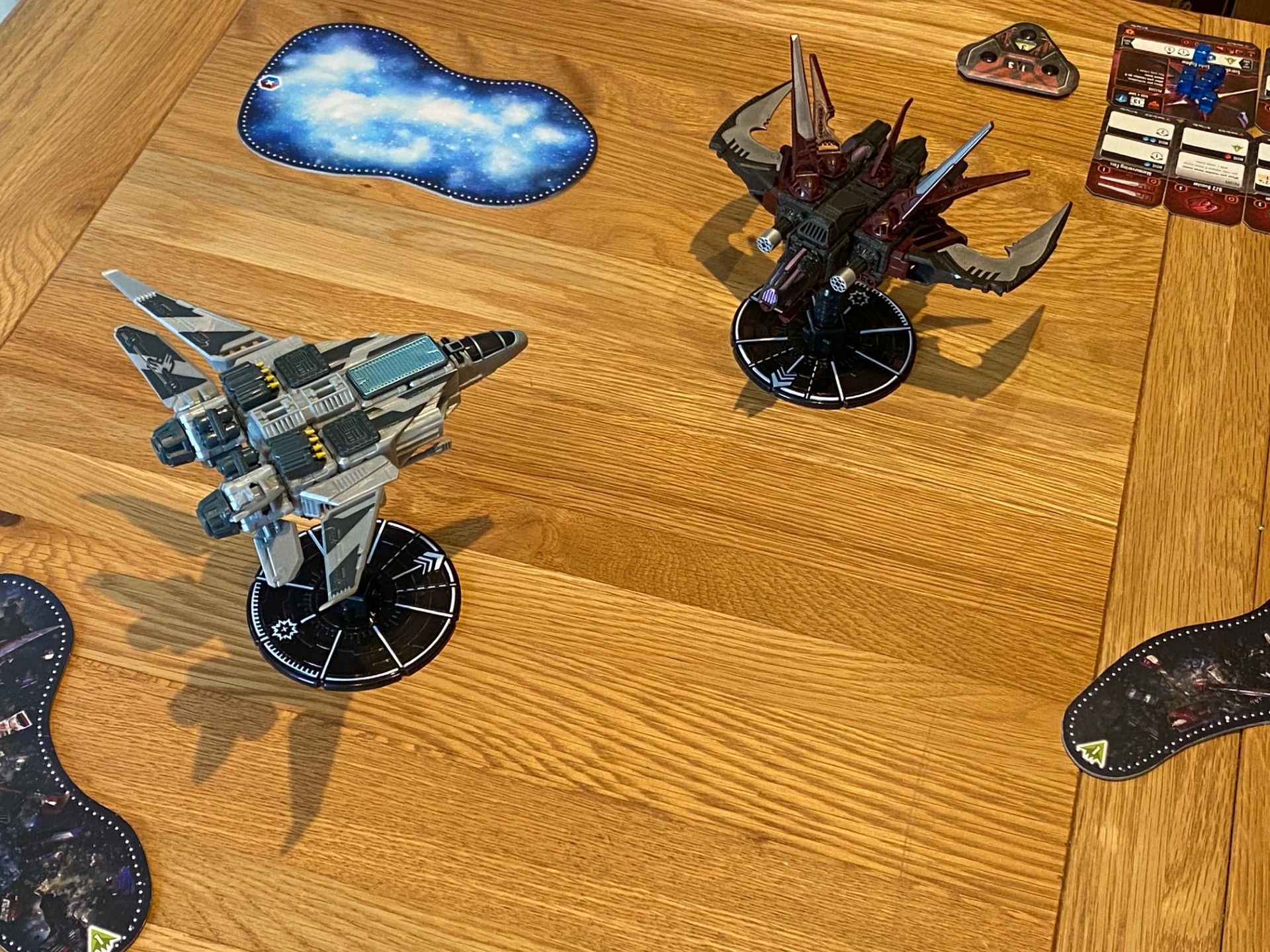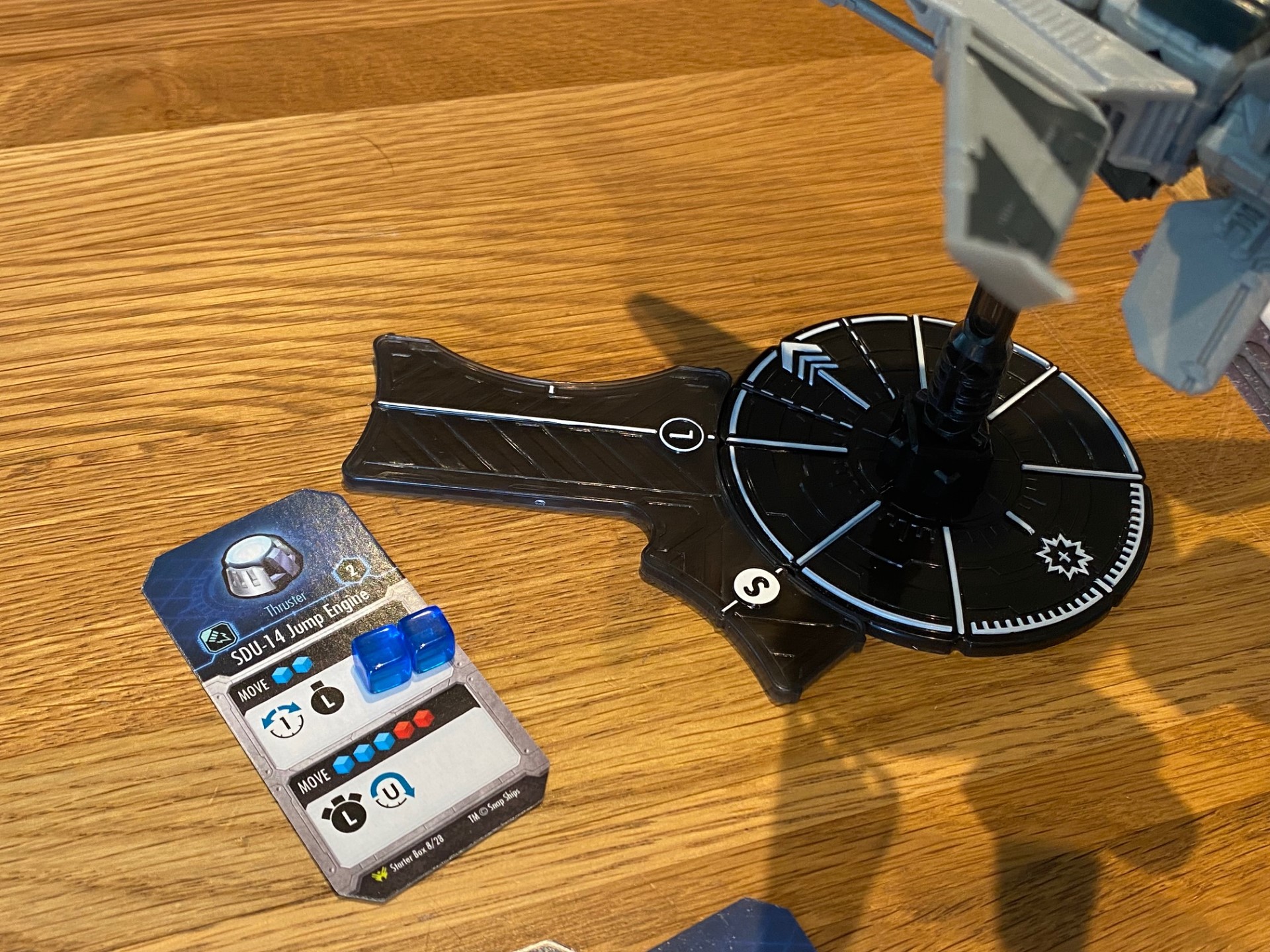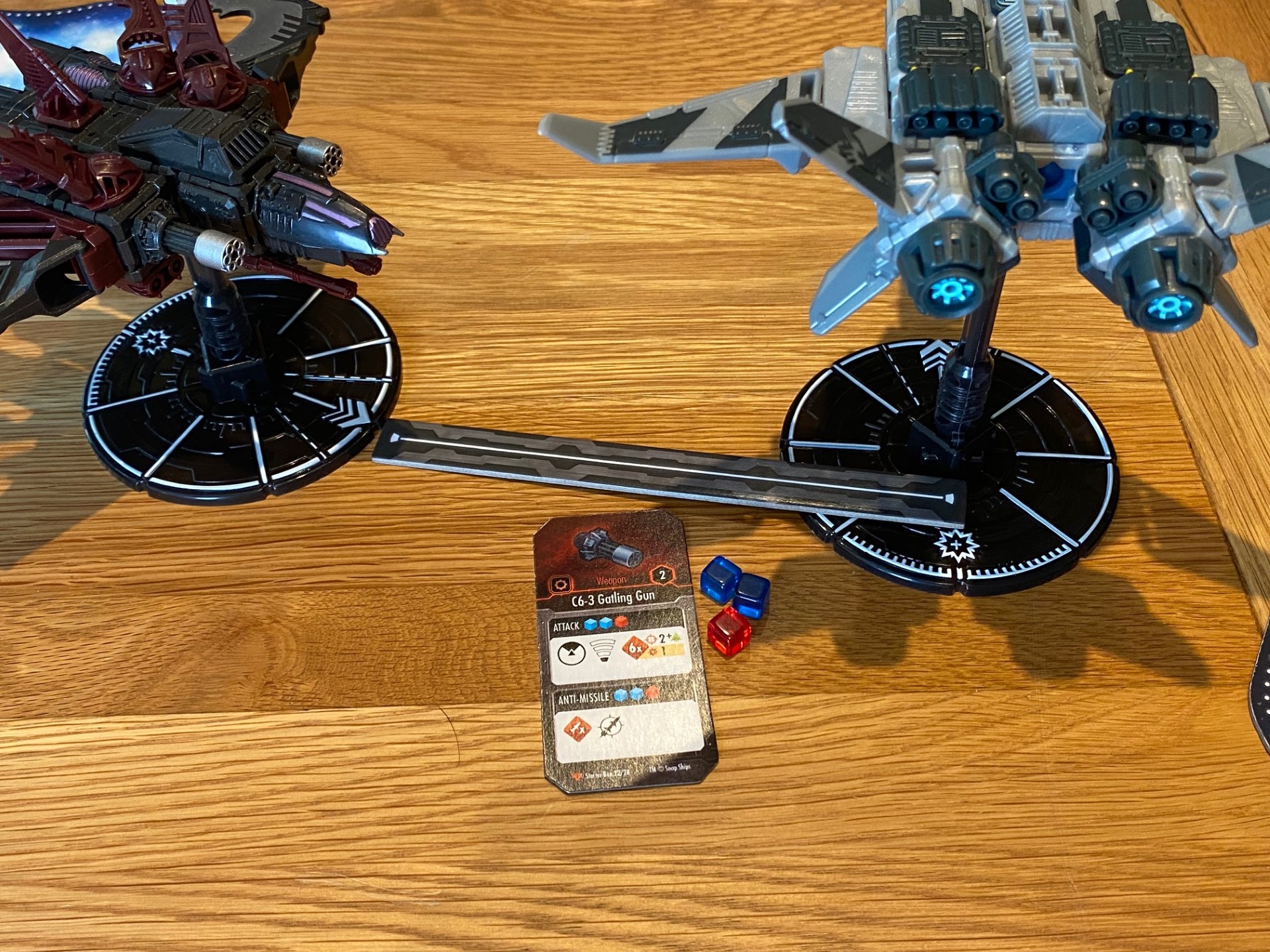Snap Ships Tactics blends fast paced fun with deep strategy
Snap Ship Tactics is perhaps both the most obvious and yet unexpected idea that I’ve seen in board gaming. It takes a simple, snap-together construction toy and turns it into a head-to-head tabletop duel reminiscent of Fantasy Flight Games’ X-Wing line — but where I felt sure that Snap Ship Tactics would probably be lacking in mechanical depth due to its toy-store heritage, it actually delivers in spades.
In the starter set that we received, there are two opposing ships to build — and three “basic” designs for each. Every ship comes with a basic chassis card that sets its health and power and instructs the player on how to set out the core pieces used to build it. Additionally in the base game at least, every ship receives six upgrade cards, each of which brings physical components to add to the chassis and powerful in-game effects. 
Whilst there is a tenuous link between the “look” of the ship and the powers on the cards, this system is absolutely awesome. The three basic builds for each side offer lots of variety, with some ships being fast, some manoeuvrable and others slow and cumbersome but with heavier weaponry and shields. I haven’t fully explored the potential of this system because I only have the basic box, but I can imagine expansions adding both variability and increasingly complex ways to bend the construction rules in interesting ways.
When ships enter the battlefield, they do so on either end of a three by three foot board or table. No map is provided or necessary, but obstacles are included in the box to make each battle more interesting. A ship turn is simple and begins with chassis actions. During this phase, a ship will reset its evasion stat (affected by part cards in the last round), reduce heat and power by the value shown (more on this later) and then move exactly its chassis movement allowance. 
Let’s pick up on a few interesting things about this system before moving on to the use of specific ship parts. Firstly, power and heat — a basic chassis has 7 power and can assign it to parts (as shown on each part) to use them. However, a part cannot provide its ability until it is completely clear of power cubes and heat. During this phase, a chassis will provide X amount of cooling (usually 5) to clear down power and heat and enable parts to come back online for use in the next phase. This literally puts a cooldown on bigger weapons and effects and just feels incredibly simple and clever. 
Secondly, let me mention the chassis movement. If you recall earlier, I said that some ships were fast, others maneuverable etc. Different chassis choices play a big role in this. For example, Ship A might only move “short” on the movement ruler, but it can rotate two “notches” on the included movement dial. On the other hand, Ship B might move “long” but can only rotate one “notch” either way. This is every bit as impactful in the game as you would expect, with Ship A making tight turns and keeping Ship B in its sights, and Ship B looping around the table in an oval shape and easily outpacing its rival.
But what about part cards? Well, with six on each ship, these make a huge impact on how a ship flies and fights. If I continue the examples above – Ship A might have long-range missiles that move faster than Ship B can escape, or Ship B might have aerofoil wings that allow it to make an unexpected 180-degree turn and unleash close-range ballistic weapons on Ship A. What if another ship, Ship C, was built to come to a near standstill, turn to almost any direction and unleash multiple weapons at the same time? The possibilities are endless… Within the card rules and power constraints, of course! 
The starter box offers loads of these possibilities simply within the six ship designs it offers as standard, however as I alluded to before, it’s what else the system is capable of that really excites me. Power and heat are the main currencies of the game, and new cards that play with these (or new chassis) will add all sorts of possibilities. Whilst Snap Ship Tactics doesn’t play in a fundamentally different way to other games of this kind, it instead achieves a similar feeling which is simultaneously easier to set up and play, and also more powerful and interesting in terms of momentary decision making.
There’s not much I don’t like about the starter set of Snap Ship Tactics. When I opened it up I was a little disappointed that it only came with one ship on each side, but when built, these things are huge and fantastic to look at. Each one comes with its own stand and sits proudly above the table – usually measuring about four to five inches in length and width. Despite the core chassis being made from simple shapes such as cubes, ships actually look quite detailed thanks to the components that attach to the chassis — missile launchers, thrusters and wings are all visible and in the case of the latter, can often be posed in various ways. Even the ship cockpits can be opened for a tiny pilot miniature to be placed inside.
Overall, Snap Ship Tactics is a game that I enjoy, but more importantly, it’s a system that really excites me. The toy factor of choosing chassis and component cards and then building the two opposing forces is great, and the gameplay is good at a mechanic level – even if the ships were completely pre-determined without any of the building. This is a fantastic-looking game that has real table presence and proper, credible gameplay. If you like ship-based skirmish games, I urge you to check it out.
You can find Snap Ship Tactics on Amazon.
Love board games? Check out our list of the top board games we’ve reviewed.
Comments are closed.